Vol 5 No. 14 TROPIC LIGHTNING NEWS April 6, 1970
Index
MG Bautz Assumes Command of 25th Division
By SP4 TOM BOZZUTO
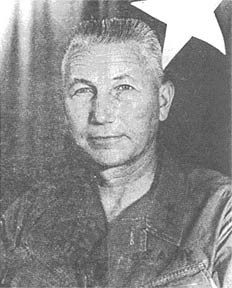 CU CHI - Major General Edward Bautz, Jr., took command of the 25th Infantry
Division in ceremonies here Thursday.
CU CHI - Major General Edward Bautz, Jr., took command of the 25th Infantry
Division in ceremonies here Thursday.
General Bautz, is the 24th Commander of the Tropic Lightning Division in its
29 year history. He replaces Major General Harris W. Hollis, who has been
reassigned as Deputy Chief of Staff for Personnel, Headquarters, U.S. Army
Europe.
The new division commander’s most recent assignment was as Assistant Chief of
Staff for Operations, Military Assistance Command, Vietnam (MACV).
Born in Union City, N.J., on April 2, 1920, General Bautz graduated from
Rutgers University in 1941, at which time he was commissioned a Second
Lieutenant in the Infantry Reserve.
He was ordered to duty with the newly activated 4th Armored Division. He
served with their 37th Armor as a platoon leader, a company commander and a
battalion commander as well as in several staff positions.
While with the 4th, Bautz participated in all five of their major World War
II campaigns, including such well-known actions as the breakout from Normandy
Beachhead and the relief of Bastogne. He also saw battle in France, Germany,
Belgium, Luxembourg and Czechoslovakia.
After the war, he served successively as tactics instructor in the Armor
School, Fort Knox, Ky., and as Operations Officer of the 1st Constabulary
Brigade in Germany.
On completion of the Command and General Staff College at Fort Leavenworth,
Kan., he was assigned to the Office of the Chief of Army field forces where he
served successively in the Office of the Inspector of Armor and as Secretary of
the General Staff.
After a tour on the Department of the Army Staff he attended the Army War
College at Carlisle Barracks, Pa., and in the summer of 1956, rejoined the 37th
Armor in Schweinfurt, Germany, as Commander of the 3rd Medium Tank Battalion.
He later served as Operations officer, 3rd Armored Division before returning to
Fort Monroe in September, 1961 where he undertook combat development duties for
Headquarters, U.S. Continental Army Command.
A short time later he was assigned to the Planning Group, Combat Developments
Command, where he participated in the developing the organization and concept of
operations for the implementation of the Report on the Reorganization of the
Department of the Army.
On activation of the Combat Developments Command at Fort Belvoir, Va., in
June, 1962, he was assigned as Chief of the Plans Division; Plans, Programs and
Intelligence Directorate.
In the fall of 1963, General Bautz attended the Advanced Management Program
at the Harvard Graduate School of Business Administration. On completion of
this course he became Director of Plans, Headquarters Combat Developments
Command, where he was responsible for Long-Range Studies, Intelligence,
International Standardization and Historical programs.
In May of 1965 he joined Headquarters, MACV, where he served as Secretary of
the Joint Staff until his return to Washington in April, 1966, to become Deputy
Director of the Enlisted Personnel Directorate. Shortly thereafter he was
transferred to the Office of the Deputy Chief of Staff for Personnel where he
stayed until October 17, 1967, when he became the Director of Military Personnel
Policies.
General Bautz’s awards include the Distinguished Service Medal, the Silver
Star, the Legion of Merit with Oak Leaf Cluster, Bronze Star Medal with two Oak
Leaf Clusters and the Purple Heart also with two Oak Leaf Clusters.
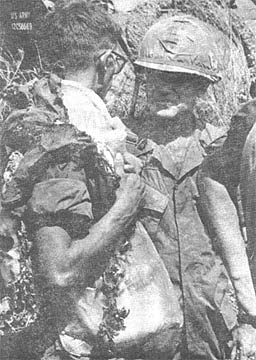 |
FIRST LIEUTENANT Bill Olson of McMinniville, Ore., models a riddled flack jacket for Master Sergeant James Quellhorst of Tacoma, Wash. The extra vest was on the turret of a 4th Battalion, 23rd Infantry track when it absorbed the blast of a rocket propelled grenade, likely saving the lives of the members of the track. (Photo by SGT Bill Oberholzer) |
Name Games
Tracks Get Personality
By SP4 RICH FITZPATRICK
DAU TIENG - Bobcats of the 1st Battalion (Mech) 5th Infantry with battle
weary posteriors report, that while naming an armored personnel carrier doesn’t
ease the ride, it does help pass the time.
“It begins in one of two ways,” explains Specialist Four Wayne Kilpatrick of
Oneonta, N.Y. “Someone finds a can of paint (a rare occasion) and says ‘Hey,
let’s paint something on our track,’ and they paint the first thing that comes
to mind.”
“Then there is the tradition-named track, where one name follows a track.
The name is dutifully repainted by new crew members when it is weather-worn.
Even after a track is retired the name often follows with ‘Volume 2’ added.” A
track of the Bobcat Recon Platoon is now “Volume 6” - having the same name since
just after the 1st Bn. 5th Inf. arrived in Vietnam.
By far the most common is naming a track after a favorite girl. Right now
Bobcat tracks salute Mary, Linda, Jenny Lynn, Arlene, Kathy, Liane, Alice, Dawn
and yes, Johnny Cash, there is even a track named Sue.
A significant influence is rock music. “Rocky Racoon,” “Brother Love’s
Travlin’ Salvation Show,” “Jumpin’ Jack Flash,” “Sgt. Pepper’s Lonely Hearts
Club,” and a flame track called “Light My Fire,” are among the titles in the
battalion.
Movies also have their influence with “Easy Rider” and “Alice’s Restaurant.”
Hometowns are not forgotten, either. El Paso, Los Angeles, San Francisco,
Big Rapids, Mich., St. Paul Park, Minn., and Bisbee, Ariz. are printed on the
sides of tracks. Southerners show their pride with numerous “Rebel” flags and
phrases.
An unusual case is a Bravo Company track which bears a “Scotland” sticker and
a drawing of the Scottish flag placed there by Sgt. Joseph Hynes of Glascow,
Scotland. “It’s a wee bit of home,” he says to explain his track’s markings.
A philosophical approach is taken by one Alfa Company track crew - they have
printed in 6 inch letters “BE TRUE TO YOURSELF FIRST - THEN THE WORLD.”
It is difficult to find a platoon without a peace symbol on at least one
track. Sgt. John Mack of Winsor Locks, Conn. explains “It’s more a symbol of
our generation than a sign of any particular political philosophy.”
Some of the names are artistically drawn while others are rough hand
sketches. Some are multi-color with psychedelic lettering and others are quite
simple.
Kilpatrick sums it up: “No matter what the track has on it, it serves one
purpose: to express a little individuality so the guys feel ‘this is our
track.’”.
Regulars Get Jump
Surprise Nine NVA
By PFC FRANK H. SALERNO
CU CHI - An ambush patrol from Alfa Company, 2d Battalion (Mech) 22d
Infantry, recently engaged and killed nine N.V.A. north of Cu Chi.
“While we were walking towards our planned ambush site,” said patrol leader
Sergeant Henry Smith, of Phoenixville, Pa., “my radioman informed me that
another ambush patrol had spotted enemy personnel.”
“The enemy, which were several hundred meters to their front, were headed our
way. So we set a hasty ambush while it was still daylight in case they were
closer than the report indicated,” assistant patrol leader Specialist Four Steve
Montgomery, of Copper Hill, Tenn., said.
After 45 minutes no one had been spotted. The patrol moved to its planned
ambush position.
While setting up the ambush, Private Andrew Werk, of Hays, Mont., spotted 10
to 13 enemy approaching and quickly passed the word. “The enemy was about 50
meters away and well armed,” Werk said.
Private First Class Doug Ryan, of Battle Creek, Mich., was returning to his
position after setting out a claymore. “I started shaking all over when
everyone suddenly motioned for me to hurry so I jumped over a rice paddy berm.
Soon I was aware of the enemy coming towards me,” he said.
“Everyone was all eyes and quiet,” said Private First Class Mark Zetter, a
machinegunner, from Portland, Ore.
The men opened up with small arms fire and received return fire from 47’s and
hand grenades. “My radio man reacted instantly and called in for illumination
and gunships,” Smith said.
The support came quickly and was effectively placed.
“It really felt great to see the gunship work out with its miniguns and
rockets,” said Private First Class Bruce Alwell, the radio operator of St. Paul,
Minn.
After 25 minutes the enemys’ fire ceased.
“The next morning we found nine bodies and they didn’t even scratch us,”
Smith added.
Page 2 TROPIC LIGHTNING NEWS April 6, 1970
Decorated
| SILVER STAR | |
| COL Olin E. Smith, HHC, 3d Bde | |
| DISTINGUISHED FLYING CROSS |
|
| 1LT Thomas J. Cannava, HHC, 2d Bn, 14th Inf | WO1 Terry L. Bachi, HHB, 25th Div Arty |
| SOLDIER'S MEDAL |
|
| CPT Ronald S.
Graves, HHC, 2d Bn, 12th Inf CPT John E. Lockner, HHC, 2d Bn, 12th Inf |
|
| BRONZE STAR FOR HEROISM |
|
|
2LT David L. Phillips, Co A, 2d Bn, 14th Inf LT Paul R. Hargrove, Co A, 4th Bn, 23rd Ind 2LT John P. Alchus, Co A, Bn, 22d Inf 2LT Donald R. Bentivoglio, Co D, 2d Bn, 27th Inf 2LT Jerry Collins, Co D, 2d Bn, 27th Inf PSG David LaBang, Co B, 4th Bn, 23d Inf SSG William W. Reilly, Co C, 2d Bn, 14th Inf SSG Richard A. Davis, Co B, 1st Bn, 5th Inf SSG Eddie Demary, Co B, 4th Bn, 23rd Inf SGT James R. Hampton, Co F, 2d Bn, 27th Inf SGT John McCubbin, Co B, 4th Bn, 23d Inf SGT Asofourale Pili, Co D, 2d Bn, 27th Inf SGT Larry W. Carrington, Co D, 2d Bn, 27th Inf SGT Walter S. Kordek, Co E, 2d Bn, 27th Inf SGT Charles W. Sanders, Co F, 2d Bn, 27th Inf SGT Clyde Lawrence, Co B, l st Bn, 5th Inf SGT Darroll Green, Co B, 1st Bn, 5th Inf SGT Erwin N. Daniel, Co B, 1st Bn, 5th Inf SGT Donald G. Probasco, Co B, 1st Bn, 5th Inf SGT Larry L. Mills, A Trp, 3d Sqdn, 4th Cav SGT John D. McGeehon, HHC, 2d Bn, 34th Armor SGT John D. McGeehon, HHC, 2d 34th Armor SGT George P. Walker, Co B, 4th Bn, 23d Inf SGT John R. Howell, Co C, 2d Bn, 14th Inf SGT John E. Kyzar, Co E, 3d Bn, 22d Inf SGT Dennis W. Valusek, Co B, 4th Bn, 23d Inf SGT Daniel Gonzalez, Co B, 4th Bn, 23d Inf SGT Thomas R. Hysill, Co B, Bn, 23d Inf SGT Daniel Gonzalez, Co B, 4th Bn, 23d Inf (1st olc) SGT Bobby Keeton, Co B, 4th Bn, 23d Inf SP4 Jimmy Rogers, HHC, 2d Bn, 43th Armor SP4 Bill G. Koch, Co C, 2d Bn, 22d Inf SP4 Roger King, Co C, 2d Bn, 22d Inf SP4 Wililarn Jones, Co A, 4th Bn, 23d Inf SP4 Chris P. DeYoung, Co B, 4th Bn, 23d Inf SP4 Harmon Catlett, Co A, 4th Bn, 23d Inf . SP4 David L. Vann, Co B, 4th Bn, 23d Inf SP4 Dennis M. Swartz, Co C, 2d Bn, 14th Inf |
SP4 Perry T. Everett, Co E, 3d Bn, 22d Inf SP4 Paul J. Comereski, Co B, 3d Bn, 22d Inf SP4 Donald H. Young, Co E, 3d Bn, 22d Inf SP4 Neal F. Harp, Co E, 3d Bn, 22d Inf SP4 Billy E. Williams, Co D, 2d Bn, 27th Inf SP4 Morgan E. Smith, Co E, 2d Bn, 27th Inf SP4 Jimmy D. Robertson, HHC, 2d Bn, 27th Inf SP4 Joseph W. Sheilley Jr, Co. D. 1st Bn, 27th Inf SP4 Everett Manning, Co D, 1st Bn, 27th Inf SP4 Dave A. Mathis, Co D, 1st Bn, 27th Inf SP4 Daniel R. Goodell, Co D, 1st Bn, 27th Inf SP4 Peter J. Carlin III, Co D, 1st Bn, 27th Inf SP4 Christopher G. Sharpe, Co B, 1st Bn, 5th Inf SP4 Christopher G Sharpe, Co B, 1st Bn, 5th Inf (1st olc) SP4 David M. Webb, Co B, 1st Bn, 5th Inf SP4 Daniel C. Paschal, A Trp, 3d Sqdn, 4th Cav SP4 Lawrence Hayes, A Trp, 3d Sqdn, 4th Cav SP4 Sammy W. Nugent, HHC, 2d Bn, 34th Armor SP4 Henry C. Slabaugh, HHC, 2d Bn, 34th Armor SP4 George T. Sandoval, HHC, 2d Bn, 34th Armor SP4 Bobby L. Parks, HHC, 2d Bn, 34th Armor SP4 Otis Mitchell, Co B, 4th Bn, 9th Inf SP4 Donavan L. Shangreux, Co A, 2d Bn, 12th Inf SP4 Emerson Thomas Jr, HHC, 2d Bn, 34th Armor SP4 Carl W. Faster, HHC, 2d Bn, 34th Armor SP4 John B. Hall, HHC, 2d Bn, 34th Armor PFC James A. Briddell, Co A, 2d Bn, 22d Inf PFC Angelo S. Milano, Co B, 4th Bn, 23d Inf PFC Randal M. Whipple, Co B, 4th Bn, 23d Inf PFC Thomas C. Bolmer, Co B, 4th Bn, 23 Inf PFC Curtis R. Speight, Co A, 4th Bn, 23d Inf PFC Francisco J. Gonzales, Co B, 4th Bn, 23d Inf PFC David L. Harrelson, Co B, 4th Bn, 23d Inf PFC Albert E. Souza, Co A, 4th Bn, 23d Inf PFC Thomas W. Bult, Co B, 1st Bn, 5th Inf PFC William H. Griffin, Co B, 1st Bn, 5th Inf PFC Karl W. Beal, Co D, 1st Bn, 27th Inf PFC Raymond M. Queen, Co D, 1st Bn, 27th Inf |
Pay Attention To Detail Details
How safe are you from yourself when you are working on a detail? How safe
are your friends from you? People who have to work on details generally do not
care much about whatever they may be working on. They become careless in the
use of equipment and materials with which the work must be done.
For instance, recently, two men were digging a sump hole at a Fire Support
Base with the help of a pickaxe. After a while the work became rather tiring,
and one of the men began cursing the Army for all its drudgery. He hit a rock
and the pick bounced back striking him in the knee. He caused physical damage
to the muscles in his knee.
Another man, a PFC, was building an observation tower along with five other
friends. While three sides of the tower lay on the ground, one of the timber
bents was standing and was supported by knee braces. However, the knee braces
were not firmly in place. The structure fell on you know who - the PFC. As a
result, the PFC found himself with a fractured right leg underneath a heavy
timber.
Remember, when working on details pay attention to what you are doing and do
it well. Your friends’ safety depends upon it - and so does yours.
GEDs Won By 61 Men
CU CHI - Sixty-one Tropic Lightning soldiers were awarded the equivalent of a
high school diploma (General Educational Development certificate) recently in a
ceremony at the division chapel.
The ceremony followed study and testing through the Army Education Center
here.
Brigadier General Michael J.L. Greene, an assistant division commander,
commended the graduates for their accomplishments under the difficult conditions
of war. He encouraged them to consider the ceremony as a beginning to expanding
their educations.
The test is free and may be taken between 8 a.m. and 5 p.m. any day except
Sunday. Tutors are available Monday, Wednesday and Friday nights from 5 p.m. to
6:30 p.m. at the education center.
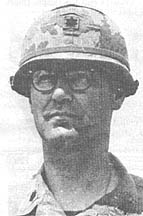 |
LIEUTENANT COLONEL Charles W. Norton, Jr., of Greensboro, N.C., is the new commander of the 2d Battalion, 14th Infantry. He came to the battalion from Nha Trang where he was executive officer for the 5th Special Forces. |
 |
NEW DIVISION SERGEANT MAJOR - Command Sergeant Major Wosley Wooley of Rapid City, S.D., recently assumed the position of command sergeant major of the 25th Infantry Division. He was formerly the command sergeant major of the 2d Battalion, 22d Infantry. |
Tropic Lightning Tots
The Commanding General Welcomes
The Following Tropic Lightning Tots
To The 25th Infantry Division – As
Reported By The American Red Cross.
Born To:
|
SP4 Jerry E. Remedis, Co E, 1st Bn, 27th Inf, girl, Mar 9 |
 |
The TROPIC LIGHTNING NEWS is an authorized publication of the 25th Infantry Division. It is published weekly for all division units in the Republic of Vietnam by the Information Office, 25th Infantry Division, APO San Francisco 96225. Army News Features, Army Photo Features, Armed Forces Press Service and Armed Forces News Bureau material are used. Views and opinions expressed are not necessarily those of the Department of the Army. Printed in Tokyo, Japan, by Pacific Stars and Stripes.
MG Edward Bautz, Jr . . . . . . Commanding General
1LT John Caspari . . . . . . . . . Officer-in-Charge
SSG Stephen F. Veroczi . . . . NCOIC
SP4 Charles C. Self . . . . . . . . Editor
SP4 Gary D. Sciortino . . . . . Assistant Editor
BATTALION CORRESPONDENTS
| SP4 Dennis Bries SGT Bill Obelholzer SP4 Jim Williams SGT Wally Baker SP4 Greg Stanmar SP4 Phil Jackson SP4 Jeff Hinman SP4 Doug Sainsbury SP4 Ken Barron SP4 Greg Duncan SP4 Brad Yaeger SP4 Frank Rezzonico SP4 Dan Neff |
2/22 4/23 2/12 2/34 2/14 2/27 2/12 2/77 1/8 2/27 1/27 1/27 7/11 |
SP4 Henry Zukowski SP4 Joe O'Rourke PFC Ray Byrne SGT William E. Zarrett SP4 Robert Caplan SP4 Brian Flaherty SP4 Rich Fitzpatrick PFC Rob Lato SP4 Ken Johnson SP4 Frank Salerno SP4 Lawrence Merritt SP4 William McGown |
2/22 3/4 2/14 4/9 4/23 3/22 1/5 2/27 2/34 2/22 4/9 DivArty |
Page 3 TROPIC LIGHTNING NEWS April 6, 1970
Troopers Discussing Human Relations
By SP5 EDMUND DRINKARD
CU CHI - A weekly series of informal meetings designed to better human
relations is being held at the 25th Administration Company.
The meetings were devised in order to bring about a clearer understanding and
more compatible relationship between the enlisted men and the officers.
Topics for discussion have been in the areas of racial harmony, NCO/EM
relations, and bridging the gap between young soldiers and old troopers. The
discussions were led by Major Charles E. Stiles who recently assumed command of
the company.
At a recent meeting, the group suggested that proper command leadership
should be stressed by the command to the NCO’s and officers of the unit.
Individuals who represent a cross section of the enlisted personnel should
attend senior NCO meetings: The personnel attending said that everyone should be
encouraged to take initiative in doing their jobs.
Problems with which the black GI is confronted with were also discussed at
length. Captain Herbert Herod, the company executive officer, said that the
major cause of racial separatism is a lack of knowledge and understanding
between the races. He said that even as a black officer, he attracts unusual
attention when he is with an all black group.
Stiles summed up the purpose of the meetings by stating, “Let people know how
you feel and try to learn how they feel. Treat them with human dignity.”
| CARGO NETS are great not only for sorties-they make a pretty good bed too. These cannoneers from Bravo Battery, 7th Battalion, 11th Artillery catch a few “Z’s” while waiting at Tay Ninh air strip for C-130 transport planes. The 105mm howitzer battery flew to Thien Ngon to support 25th Infantry Division troops on a six-day operation. |  |
Artillery Surveyors Know All the Angles – Precisely
By SP4 DOUG SAINSBURY
PB BLUE - “Artillery survey performs a function similar to that of the
offensive line of a football team: emplacement of howitzers by survey insures
accurate fire, and only if the line blocks well will the quarterback be able to
throw accurate passes.”
The analogy comes from Staff Sergeant Bob McCormick of Albany, N.Y., chief of
the survey section of the 2d Battalion 77th Artillery.
Artillery survey is perhaps one of the least recognized aspects of artillery,
but is one of the most important.
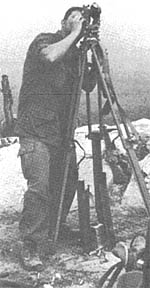 “Basically the job of survey is to locate the exact grid coordinates where
the howitzers are to be placed,” said McCormick. “We do this by finding a
survey control point which is located and marked at an exact grid by the next
higher survey echelon.
“Basically the job of survey is to locate the exact grid coordinates where
the howitzers are to be placed,” said McCormick. “We do this by finding a
survey control point which is located and marked at an exact grid by the next
higher survey echelon.
“In our case it’s Division artillery. They also give us a known direction
from the control point to a certain station. We then carry this known data to
where the guns will be placed.”
McCormick, as chief of section, supervises all phases of each survey problem
checking on the condition of equipment and the accuracy of each man’s
computations. Precision is the key to effective survey work.
Specialist Five Bob Forbes of Atalissa, Iowa, is the Instrument Operator
(IO).
“I use a complex instrument called a Theadolite to measure horizontal and
vertical angles between front and rear stations by sighting off of range poles,”
he said.
Working closely with the IO is the Recorder. Specialist Four Ron Switzer of
Holt, Mich., is 2/77’s Recorder.
“When the IO determines his readings, he calls them off to me. I record the
data and tape readings, he calls them off to me. I record the data and tape
distances and maintain a sketch of the survey as we go along.”
After the Recorder marks the data called to him by the IO, he relays the
information to the Computers.
There are always two Computers on every survey. The reason for this is they
must utilize intricate geometric and trigonometric principles in computing the
exact grid coordinates of each station as it is established by the other members
of the crew. Each Computer works independently with the same data, and then the
results are compared. This double-check system insures accuracy throughout the
survey.
Two Rodmen, Specialist Five Bill Kirby of Chicago, and Specialist Four Jerry
Pyles of Springfield, Ohio, move ahead of the rest of the section driving hubs
(usually M79 cannisters) into the ground and then erecting range poles above the
hubs. The IO takes his readings by sighting off the range poles.
“The range poles must be directly over the hub and they must be level or the
IO’s angle will be off,” said Pyles.
Another duty of the Rodmen is to guide the Tapemen so that they measure
distance on a straight line between stations.
The Tapemen measure the precise distance between the rear station and the one
occupied by the IO and the Recorder. A 30 meter steel tape is used producing
results to the nearest centimeter.
“Pulling tape is a tiring job because we have to make sure that there is no
slack in the tape and at the same time the tape must be directly over the hub of
each station,” said Specialist Four Dale Brown of Watseka, Ill.
“But the toughest part of tape pulling is when you have to work in rice
paddies and mud waist-deep during the rainy season,” said Private First Class
Tom Payment of Baton Rouge, La.
Each station is erected and computations taken from it in the same manner as
the crew hopscotches across the earth’s surface from the control point to the
exact point where the howitzers are to be emplaced.
Depending upon the nature of the terrain, artillery survey is also capable of
calculating accurate altitudes for each station as the survey progresses.
“We don’t compute altitude in our area of operations, though, because the
terrain is relatively flat,” said Specialist Four Ed Syzmansky of East Hartford,
Conn.
“Crossing the goal line in football gives a team six points,” McCormick
said. “A touchdown for us is an accurate survey so the howitzers can be
effective.”
Poet Writes of Life, Love, Death
By SP4 FRANK REZZONICO
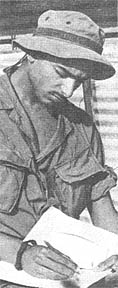 BEARCAT - Fatigue, fear, bravery, anger and homesickness are a few of the
many characteristics the pressures of combat bring out in a man.
BEARCAT - Fatigue, fear, bravery, anger and homesickness are a few of the
many characteristics the pressures of combat bring out in a man.
For Specialist Four Keith Underwood, a member of 1st Battalion, 27th Infantry
Wolfhounds, a different kind of expression of emotion is seen. Keith writes
poetry.
In his works are found three topics, all of which are experienced in a
lifetime - life, love and death.
Keith became interested in poetry during high school in his home town of
Urbana, Ohio. He developed an interest in the works of William Shakespeare and
Edgar Allen Poe. Robert Frost and Henry Thoreau are two other bards who have
left their poetical imprints on Keith’s mind.
His interest in poetry has had rewards. While attending high school Keith
had a number of his poems printed in his school newspaper as well as taking top
honors in literary contests.
He is quiet, soft-spoken and, basically an optimist.
“I try to bring out the good and the beautiful of all existence around me;
yet, I often find myself trying to block out the evil though it is a part of life,” Keith said.
“I try to bring out the most intense feelings of emotion and admiration that
one might not have felt possible to express.”
One of his poems shows the feeling Keith has toward the subject:
“Love is a deep, dark, rich feeling which is forever giving the heart room
for happiness and the will to go on when all seems hopeless; yet it is the only
thing upon the face of the earth that one could hold in his very hands and,
through the joy of it all, never even feel its weight until it is taken away.”
“Just as life and love are part of our lifetime, so is death,” Keith said
“with death I merely try to bring out the uncertainty and the unknown of death itself. Death has
always interested me, for when there is something unknown - I want to know about it.”
Tonight as all tonights,
We act as one.
Today as every today,
And tomorrow as each tomorrow,
We live as one.
In a time as all times come,
We maneuver as one.
In a moment as every moment,
As in a single instant as an instant,
We shall rule as one,
We shall fight as one,
And, if we must die,
Assuredly, we shall die as one!
Inspiration and imagination are important ingredients in poetry writing.
“Inspiration is most essential in writing poetry, as is imagination,” Keith said, “Both are all
that is needed in good creative writing.”
Aside from writing poetry Keith enjoys song writing and short story writing.
He is in the process of writing “Jessie and Jessica,” a post Civil War story of two
lovers.
Keith has written lyrics for a number of songs and hopes that someday they
will be published. The songs, like the stories and poems, involve the joy of
life, the happiness of love and the sorrow of death.
Looking toward the future, Keith said, “I plan on entering college where I
will major in English. Returning to school will enable me to enhance my
vocabulary and widen my scope on all subjects, which is a necessity in poetry
writing.”
Recon Men Jump NVA
The sun had just gone down, and the eleven man AP from Recon Platoon, E
Company, 3d Battalion, 22d Infantry, had just finished setting their position.
Sergeant John Kyzar spotted movement of a small group to his front. He asked
Specialist 4 Perry Everett, “Hey, are they CIDG’s?” Everett replied, “Hell no,
they have AK’s.”
At this point, the men from E Company commenced the action with M16, M60 and
M79 fire. The fifteen man party of VC did not even attempt to return fire.
The bunch from E Company kept a silent vigil until 6 a.m. They conducted a
quick sweep and found two bodies and two AK’s.
Page 4-5 TROPIC LIGHTNING NEWS April 6, 1970
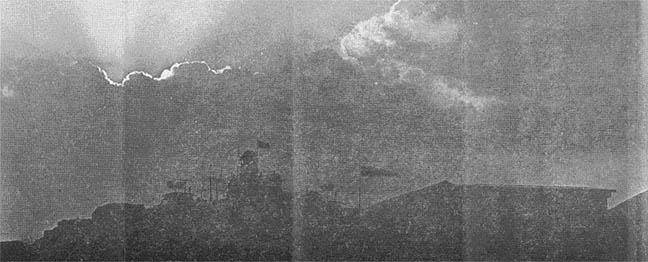 |
Lonely Are The Brave
Mountain Men: Heads in Clouds, Feet on Ground
TAY NINH – Nui Ba Den is a mountain that rises 3,200 feet above the midst of
a cultivated plain nine miles from Tay Ninh City. At the top is a
watchtower-lookout station manned by a pathfinder who guides aircraft in and
out. Surrounding the watchtower are huge boulders, conexes, bunkers made of
sandbags and PSP (perforated steel plating), a reservoir, a basketball
court, a PX, a mess hall and helicopter landing pads.
The 25th, First Cav and First Infantry Division each have men serving on the
mountain. They are joined by relay men for signal transmissions, radar
technicians, engineers, airmen, an ARVN unit and a few Marines.
There are only eight acres of ground on the mountain top: improved real
estate enclosed by tangles of barbed wire coiled profusely around the
perimeter. Screens of heavy woven wire protect the bunkers from rocket
propelled grenades.
Infantrymen man the outer perimeter bunkers. They live and pull guard in
them. They also do most of the digging, building and rearranging of positions
during the day.
Each bunker is connected by telephone and radio. Some have push-button bell
alarm systems so the man upstairs on guard doesn’t have to run downstairs to
wake his partners.
All the guard has to do is push the button. The bell rings. The other men
know what it means and the guard can keep his eyes and his sights on the
movement.
A little sleeping on guard, a gradual lessening of alertness, a slowing of
reactions and it could mean the difference between waking up in the morning or
not.
So, the men stay alert and keep working. There are 150 days apiece for them
on the mountain.
Among the major accomplishments on the mountain is the construction of a road
around the mountain camp. It is named the Colonel Tyler tollway - posted speed
limit: 75 miles per hour.
The reservoir is new and so is the mess hall. An engineer outfit airlifted
the concrete to the peak to lay the mess hall foundation.
The new complex is sturdy. It is manned by soldiers who are determined to
live there until they can go home.
 |
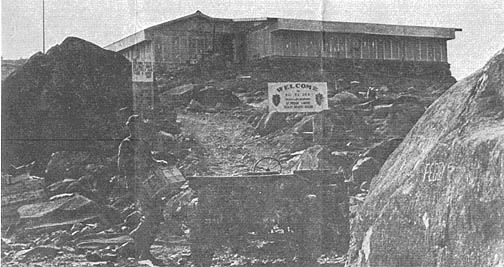 |
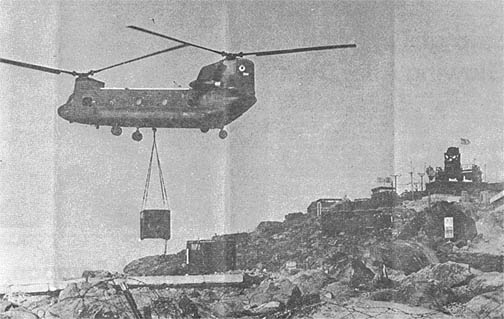 |
|
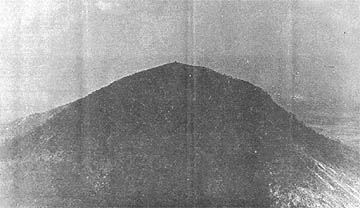 |
Page 6 TROPIC LIGHTNING NEWS April 6, 1970
There was Light
Strip at Tay Ninh Glowing After Dark
TAY NINH - The ribbon was cut, the generator lever pulled, and the airstrip
lights at Tay Ninh Base Camp lit up for the first time.
With the addition of the lights, the airfield here now has a 24-hour
operational capability. The lights run up and down the airstrip and have
different intensities to allow for varying weather conditions.
The project was accomplished in one week’s time by the 362d Aviation Support
Detachment, commanded by Lieutenant Colonel Jerry Orr, Asheville, N.C.
Sergeant First Class Walter Watkins, Hartford, Ala., was NCOIC on the
project, but admitted that most of the work was done by Sergeant Frederick Coen,
Davenport, Iowa, and Specialist Five Jessie Smith, Magnolia, N.C.
“Before we got the lights,” explained Watkins, “we had to use flares in
buckets whenever we had aircraft coming in after dark.”
“That was not exactly the best way to run an airfield,” added Coen.
“Sometimes the planes would blow the flares out as they taxied by, and during
the wet season, sometimes the buckets would fill up with water and the flares
would naturally go out.”
Sarge Tests Out His Old Product – Hand Grenades
CU CHI – For Sergeant Daniel Dailey, squad leader of Bravo Company, Triple
Deuce, hand grenades were an everyday thing in the United States.
Before Dailey came into the Army he worked for nine months in a munitions
plant in his hometown of Philadelphia, electrically plating grenade handles.
“My machine produced about 900 rounds of plated handles a day,” he said.
“Sometimes I wonder if the grenades I use now are the same ones I helped
make. I’m sure glad I did a good job on them,” Dailey said.
Dragons Sink Sampan, Enemy
By SP4 GREG STANMAR
CU CHI - The NVA recently came into a river terminal they didn’t know
existed. By the time they were aware of it their voyage was ended by claymore
mines and small arms fire of the Golden Dragons.
“They surprised us and we surprised them,” said Specialist Four Jim Hinton,
Grove City, Ohio. “We were just faster.”
Charlie Company of the 2d Battalion, 14th Infantry, set up a night ambush on
a deep inlet of the Oriental River. After a portion of the night had passed, an
enemy sampan with five crew members and five more NVA acting as security on the
shore, came into view. Claymores were detonated in unison, quickly sinking the
boat. Friendly small arms fire followed. Five enemy were found dead.
“It’s hard to say how many we really got,” said Specialist Four Silvio Nicol
of Modena, N.Y. “The river (creek) was really deep there. Maybe some of the
bodies went under.”
The enemy on shore managed to get off three grenades before being quieted.
U.S. forces suffered only minor wounds.
In addition to the five enemy dead, two automatic weapons were recovered
along with various pieces of equipment.
| WET TERRAIN - Infantrymen of Bravo Company move out across a swampy area near the Saigon river. (Photo by SP4 Jim Williams) | 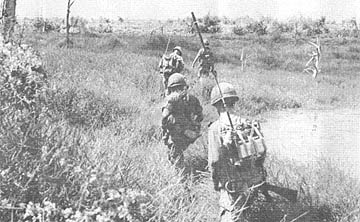 |
‘Audience’ Zaps Fashionable V.C.
CU CHI - Charlie Company, 2d Battalion (Mech), 22d Infantry were recently
treated to a show of the latest in Viet Cong fashions for men.
While moving from a night laager site a recon patrol was confronted by a lone
VC wearing a bright green blouse and blue trousers accented by a reddish-brown
belt with red star and matching brown sandals.
The fashion show created an instant impression with the Triple Deuce troopers
who burst forth with a standing ovation of small arms “applause.”
Upon closer inspection the troops found that the outfit also included a
canteen and documents. A rucksack stuffed with VC uniforms completed the
ensemble.
Computer’s Gift Proves Misleading
TAY NINH - Uncle Sam’s “Be smart, stay Army” program is getting more discreet
and subtle all the time.
Just ask First Lieutenant Harold Yager from New London, Md. Yager,
Communications Platoon leader for the 1st Brigade, traveled to 125th Signal
Battalion in Cu Chi to pick up his February pay.
He was expecting the usual $62. Instead, the “amount paid” on his pay
voucher read $4,559.
“I thought maybe this was part of the Army’s new experimental re-up program
where they give you the bonus in advance, then hope you decide to stay in,”
reasoned Yager.
Sorry men - it ain’t so. One of the Army’s computers just made a “tee-tee”
mistake and overpaid $4,497.
Ask Sgt. Certain
DEAR SGT CERTAIN: In my travels through Vietnam I have seen a good many Boy
Scouts, but no Girl Scouts. How come?
MAJOR QUANDRY
DEAR SIR: Chocolate mint cookies loose all appetizing consistency at about 80
degrees Fahrenheit. Creme sandwich cookies go limp, and high humidity makes
shortbread cookies mushy. A Girl Scout program in Vietnam is not feasible.
DEAR SGT CERTAIN: Our unit has a little ceremony to welcome replacements to the
25th Division. We would like music but have heard that the 25th Division
musical record won’t be available until July. What do you suggest we play?
WELCOMING COMMITTEE
DEAR WELCOMING: How about, “Strawberry Fields Forever?”
DEAR SGT CERTAIN: Why is it that so many guys put the strings to their jungle
hat in the back instead of the front.
COMING UNSTRUNG
DEAR COMING: I can’t speak for everyone, but the last time I wore my string in
the front, a chopper flew by. The hat blew up. The string poked the tip of my
cigarette into my nose and SGT Certain looked like Rudolph the Rednose Reindeer.
Page 7 TROPIC LIGHTNING NEWS April 6, 1970
Expo ‘70: Peace and Harmony for Mankind”
OSAKA, Japan – “Bampaku” or “the Exhibition of 10,000 countries” will be
underway here through next September. It is the world’s biggest and most costly
exposition and is a good spot to spend an R&R or leave from Vietnam.
Specialist Four Phil Jackson, a correspondent for the 2d Battalion, 27th
Infantry Wolfhounds paid a visit to the fair shortly before the gates opened in
mid March.
He said it looked spectacular even before the gates were opened.
It is the first world’s fair in Asia. Seventy-seven nations are represented.
Among the many amusements are robots, mechanical birds and insects, computer
controlled automobiles, a space station, a castle made out of glass and a
shooting the rapids ride.
The theme of the fair is “Progress and Harmony for Mankind.” The emblem is a
cherry blossom, the flower of Japan. It symbolizes the five major continents
“joined together in peace and harmony.”
|
Photos by SP4 Phil Jackson |
|
Page 8 TROPIC LIGHTNING NEWS April 6, 1970
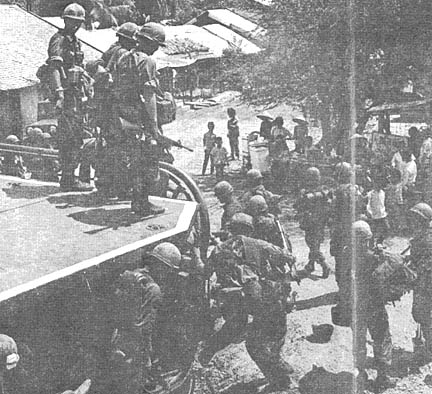 |
| BACK FROM A MISSION, A boatload of Golden Dragons of 2d Battalion, 14th Infantry leap from a Tango boat at Go Dau Ha. The boats serve in combat as miniatures of the Navy’s larger LST’s. (Photo by SP4 Greg Stanmar) |
Transport Tango Charms Dragons
GO DAU HA - In an earlier day the Tango may have created havoc on the dance
floor. Now it’s doing a pretty good job on the battlefield.
The Tango of today isn’t a dance step but a small Navy troop carrier similar
to the LST. It is so ungainly looking one could never associate it with the
graceful art of dancing. But when it comes to war, there are few who will doubt
its success with its partner the 2d Battalion, 14th Infantry.
The 25th Division uses these heavily armed boats, now operated by the
Vietnamese Navy, to transport its troops to and from the thickly vegetated areas
along the Vam Co Dong River.
When a boat reaches an objective along the river bank it beaches and the
troops storm out from the front ramp or jump off the sides.
Bravo Company of the Golden Dragons recently conducted a four-day operation
along the Oriental that terminated when they were picked up by the Tango Boats.
Before they could reach the river they had to walk through swamps that often
reached their chins.
When they reached their objective shouts of, “Hey, a river cruise,” “The
fleets in” and “They’re the Navy and we’re the Infantry, but look who’s drier”
could plainly be heard.
But the company was quick to take advantage of their “river cruise” as they
settled down on the large, dry decks for the trip up stream.
“When I get back I’d volunteer for permanent KP,” said one trooper, “but that
means getting wet.”
Night Laager Yields Rice, Med Supplies
By SP4 JOE O’ROURKE
CU CHI - A two day reconnaissance mission in the Boi Loi Woods, North of Fire
Support Base Wood III, by ALFA Troop 3rd Squadron, 5th Cavalry, brought forth
more than 4,000 lbs of polished rice and 250 lbs. of medical supplies recently.
“We were only about 1,000 meters from our night laager position”, stated
Specialist Four Mahlon K. Kapule from Honolulu, Hawaii, a dismount in the 3rd
platoon, “when we noticed a small hut like structure in the middle of some
brush. Our dismounts were sent over to check it out.”
“It turned out to be two pieces of tin shaped in the form of a roof covered
with leaves with a one foot deep sunken floor. After carefully probing around
we discovered a trap door in a corner, that led us to over 250 lbs. of medical
supplies and two SKS rifles. There were shelves built in the wall and it looked
like a regular warehouse down there”, Kapule said.
“We were searching an area just west of where we found the medical supplies,
the day before,” stated Specialist Four Danny E. Harless, also a dismount from
the 3rd platoon.
“We moved into a very suspicious looking area. We got word from the platoon
leader to check it out on foot. After I was on the ground for about five
minutes I found a well-used trail and decided to follow it. I didn’t have to go
very far when I discovered a bunker that contained bags and bags of rice.”
“I called in the findings and marked the bunker, then started down the trail
again. Shortly I came across two more bunkers filled with bags of rice. After
counting 118 bags the rice was sent back to the rear where it was weighed in at
more than two tons”.
Detainee Leads ARVN Regiment To One of Largest Ammo Caches
By SP4 RICH DOMBROWICKI
BAO TRAI - Elements of the 49th ARVN Regiment recently parlayed the
cooperation of a detainee with their own skill and alertness to compile one of
the largest munitions caches found in the 3d Brigade area of operations.
The detainee, captured with four others near Trung Lap, led units of the 2d
Company of the 4/49th ARVN’s to a twin cache to start off the day. The cache
included boosters, detonating cord, blasting caps, rockets and other materials,
as well as small arms ammunition.
The detainee then led a recon platoon of the unit to another site nearby.
This one, however, was guarded by three Viet Cong. The ARVN’s quickly
overwhelmed the enemy, killing two and capturing the other. The men also
captured numerous rocket rounds and boosters.
After the action, and still in the same vicinity, the platoon discovered a
hidden tunnel and captured two NVA officers and their equipment, including
binoculars, radio, map and documents. A 60mm mortar tube with bipod and base
plate was also found.
Meanwhile, another ARVN platoon from the same unit had discovered another
cache, featuring a complete 82mm mortar with rounds, fuses and charges.
To finish off the day’s discoveries, the detainee led a recon unit to a
bunker which yielded a 75mm recoilless rifle with tripod.
Admin Company ‘Adopts’ Brood at Catholic Home
LAI THIEU - Soldiers from the 25th Administration Company have “adopted” the
more than 600 deaf and mute Vietnamese children who live and learn at a Catholic
home near here.
The men make a trip to the home every two weeks to deliver clothing and visit
with the children who are between four and sixteen years old.
The first visit was at Christmas time. Soon after, Specialist Five Eric
Meine, who works in the division enlisted records office wrote to his parents
asking them to gather clothing for the Vietnamese children.
Meine’s family, along with a boys club in Locust Valley, N.Y., got to work
gathering clothing and money that was used to ship what they collected. During
one recent visit the men from admin company delivered 160 pounds of clothing to
the home.
The children welcomed the soldiers by giving them Vietnamese beer, soft
drinks, peanuts and water melon.
“They have lots of questions,” Lieutenant Jerry Retzloff of Three Rivers,
Tex., an admin company officer, said. “They write their questions on slips of
paper and the G.I.s write answers and add questions of their own. Their English
is very good - better than a lot of G.I.’s,” Retzloff said.
Retzloff and many of the other men in admin company have written home for
more clothing for the children. Major Charles Stiles, admin company commander,
said he would like to start a fund raising drive in admin company. The money
would be used to buy materials so the Vietnamese could do some new building at
the school.
“Believe me, that’s the way to do it, Stiles, a former MACV adviser, said.
“We couldn’t build anything the way they wanted it and we couldn’t do as good a
job,” he said.
Meanwhile, the twice-a-month visits continue.
“Our men spend most of their time working in the division staff sections,”
one officer said. “They like to get out to the villages and meet the people.
They enjoy going to Lai Thieu as much as the children enjoy having them visit.”
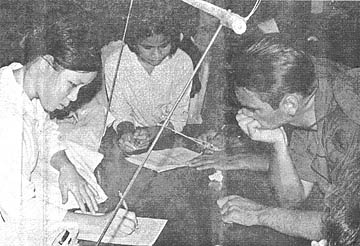 |
A QUIET CONVERSATION - Soldiers from the 25th Administration Company exchange notes with children they have “adopted” at a Catholic home 25 miles from Cu Chi base camp. The more than 600 children at the home are deaf. (Photo by MSG James Nance) |
Thanks to:
Karl Karlgaard, 2nd Bn., 27th Inf., and a Tropic Lightning News correspondent,
for sharing this issue,
Kirk Ramsey, 2nd Bn., 14th Inf. for creating this page.
This page last modified 02-21-2005
©2005 25th Infantry Division Association. All rights reserved.